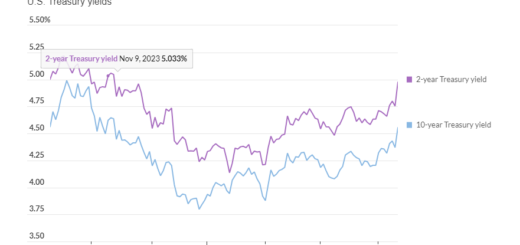Inflation Signals in Silence: Good Friday’s PCE Data & Closed Markets
The imminent release of the February personal-consumption expenditures index carries substantial weight for investors, potentially molding expectations regarding future rate adjustments by the Federal Reserve. However, this pivotal data unveiling coincides with the Good Friday holiday, rendering financial markets closed for the day.

While U.S. stock exchanges will be inactive on Friday and the Treasury market will close early on Thursday, economic data will still be disclosed as scheduled, given that Good Friday is observed as a market holiday rather than a federal one.
Anticipation surrounds the expected data, with economists projecting a continuation of elevated price pressures. Forecasts suggest a 0.4% rise in the headline PCE for February, surpassing January’s 0.3%, while the annual rate is expected to climb to 2.5% from the previous month’s 2.4%. The core measure, excluding volatile food and energy components and preferred by the Fed as an inflation gauge, is anticipated to increase by 0.3% in February, slightly lower than the previous month, with year-over-year core inflation forecasted to hold at 2.8%.
Recent upticks in the consumer-price index have instilled apprehension into Wall Street, prompting some investors to recalibrate their expectations for the timing of the Fed’s initial interest-rate cut. Consequently, the forthcoming PCE report is deemed particularly significant, serving to discern whether the preceding inflationary figures signify temporary deviations or herald a prolonged trend of heightened inflation.
Although financial markets will be closed, traders will assess the implications of the inflation report upon the reopening of futures markets over the weekend. Their analysis will center on whether the report alters the Fed’s strategy of potentially implementing three rate cuts in 2024.
Federal Reserve officials, having kept interest rates steady for the fifth consecutive meeting, maintain their projection of reducing rates by 75 basis points by the end of 2024, as indicated by the latest “dot plot.” Futures traders are currently estimating a 61% likelihood of a 25-basis-point rate cut occurring in June, according to the CME FedWatch Tool.
While Monday is anticipated to provide clearer insights into market reactions, some foresee a subdued response due to investors’ tendency to prioritize recent market-moving events over historical data. Analysts caution that a higher-than-expected PCE reading could challenge the narrative articulated by Fed Chair Powell, potentially influencing the timing of future rate adjustments.
The conclusion of a month or quarter often prompts portfolio rebalancing by managers, which, despite being anticipated, may still induce price fluctuations in the markets.




